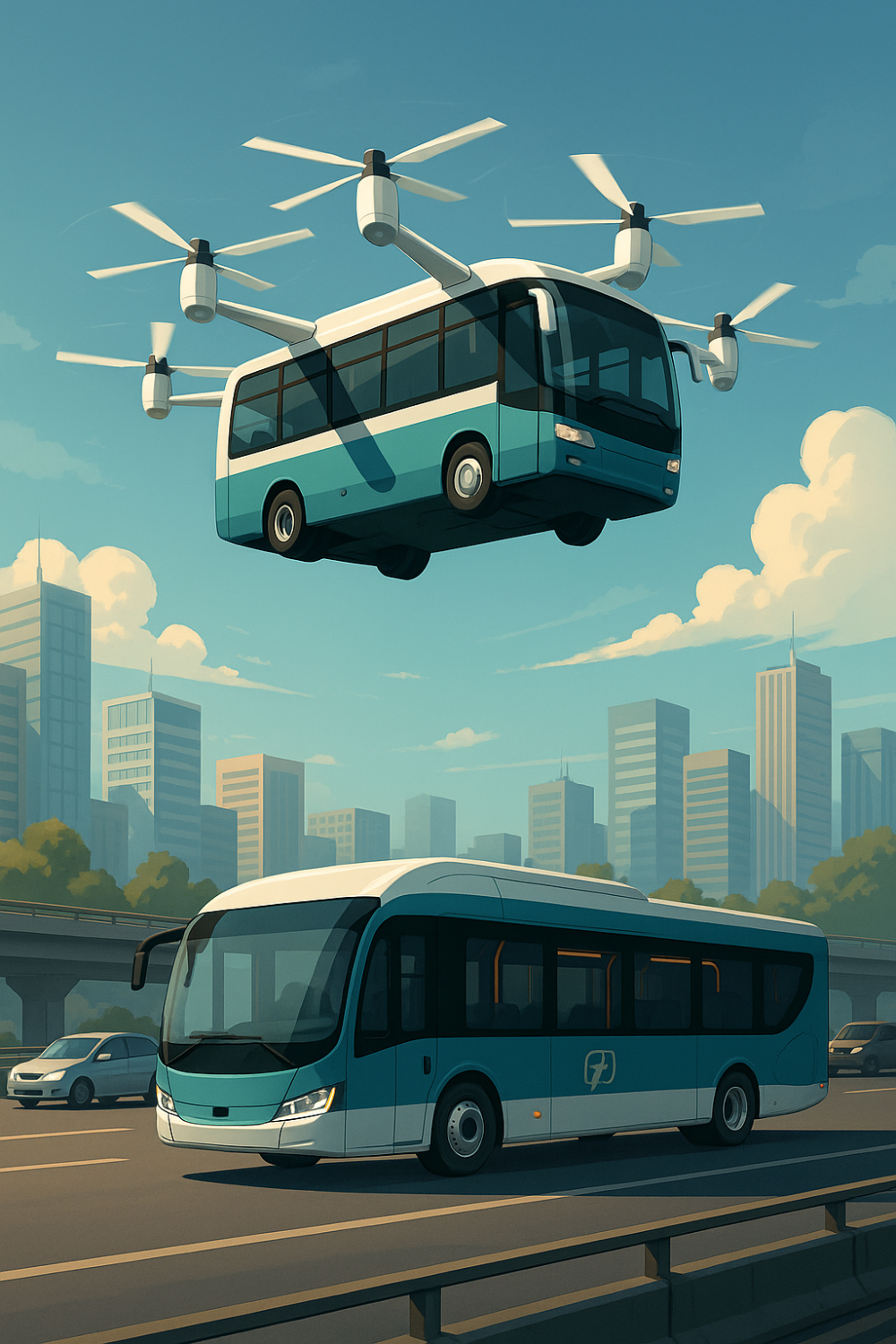
India is inching closer to a futuristic transformation in public transport, as Union Minister Nitin Gadkari outlined a series of ambitious mobility innovations aimed at tackling chronic traffic congestion in Indian cities. From flying buses in Delhi to cutting-edge electric buses in Nagpur, Gadkari’s vision promises to revolutionize the way Indians travel.
Speaking to ANI, Gadkari revealed that the government is in the final stages of launching a “flying bus” service based on the 'pod-way system' on the busy Delhi–Manesar route via Dhaula Kuan. The initiative seeks to address persistent traffic bottlenecks by lifting transport off the ground. “We aim to create a public transport system that is seamless and free from traffic interruptions,” said Gadkari.
Taking innovation a step further, the minister also discussed a proposed double-decker air bus system for hilly regions such as Uttarakhand and Jammu & Kashmir. These elevated aerial buses would connect mountaintop locations, solving the logistical and cost-related challenges of building roads in difficult terrains.
Nagpur will soon become the launchpad for India’s first flash-charging electric bus featuring:
135-passenger capacity
Executive-class seating
Front-mounted TV screens
Onboard hostesses, inspired by airline hospitality
The bus, equipped with technology developed by Tata and its partners, will have a top speed of 120 km/h and will recharge fully in just 30 seconds at designated stops every 40 km. Notably, it uses a reduced number of lithium-ion batteries, resulting in lower operating costs.
Gadkari emphasized the cost-effectiveness of this innovation, noting that the fare will be 30% cheaper than traditional diesel-run buses. Following the Nagpur trial, the electric service is expected to expand to major intercity routes, including:
Delhi–Jaipur
Delhi–Dehradun
Delhi–Chandigarh
Bengaluru–Chennai
Mumbai–Nashik
Mumbai–Pune
These developments underline the Centre’s commitment to sustainable and smart transportation. With futuristic tech and affordability at the core, Gadkari’s blueprint aims not only to ease urban mobility but also to make public transport a more attractive option for millions.